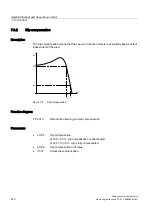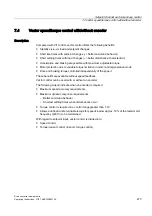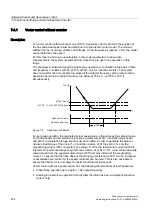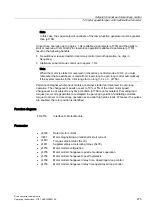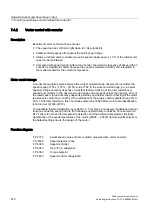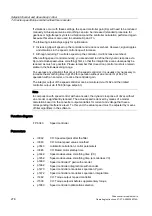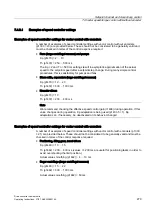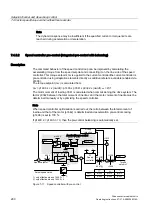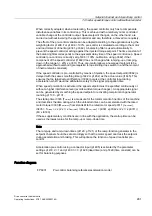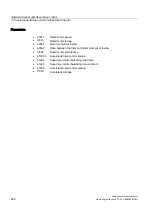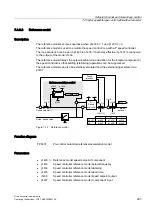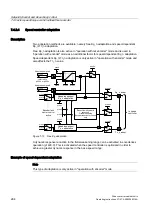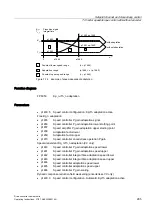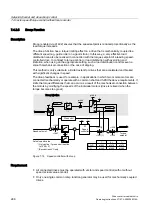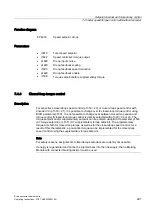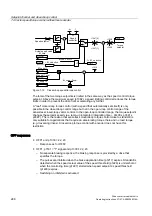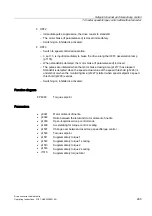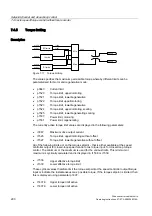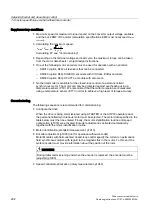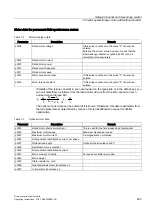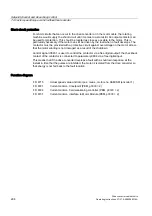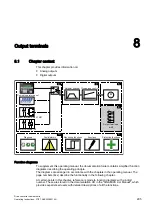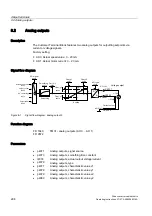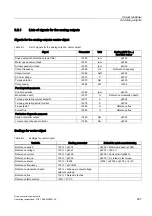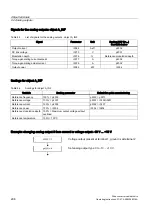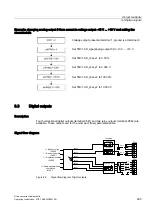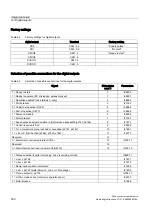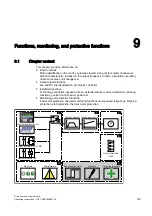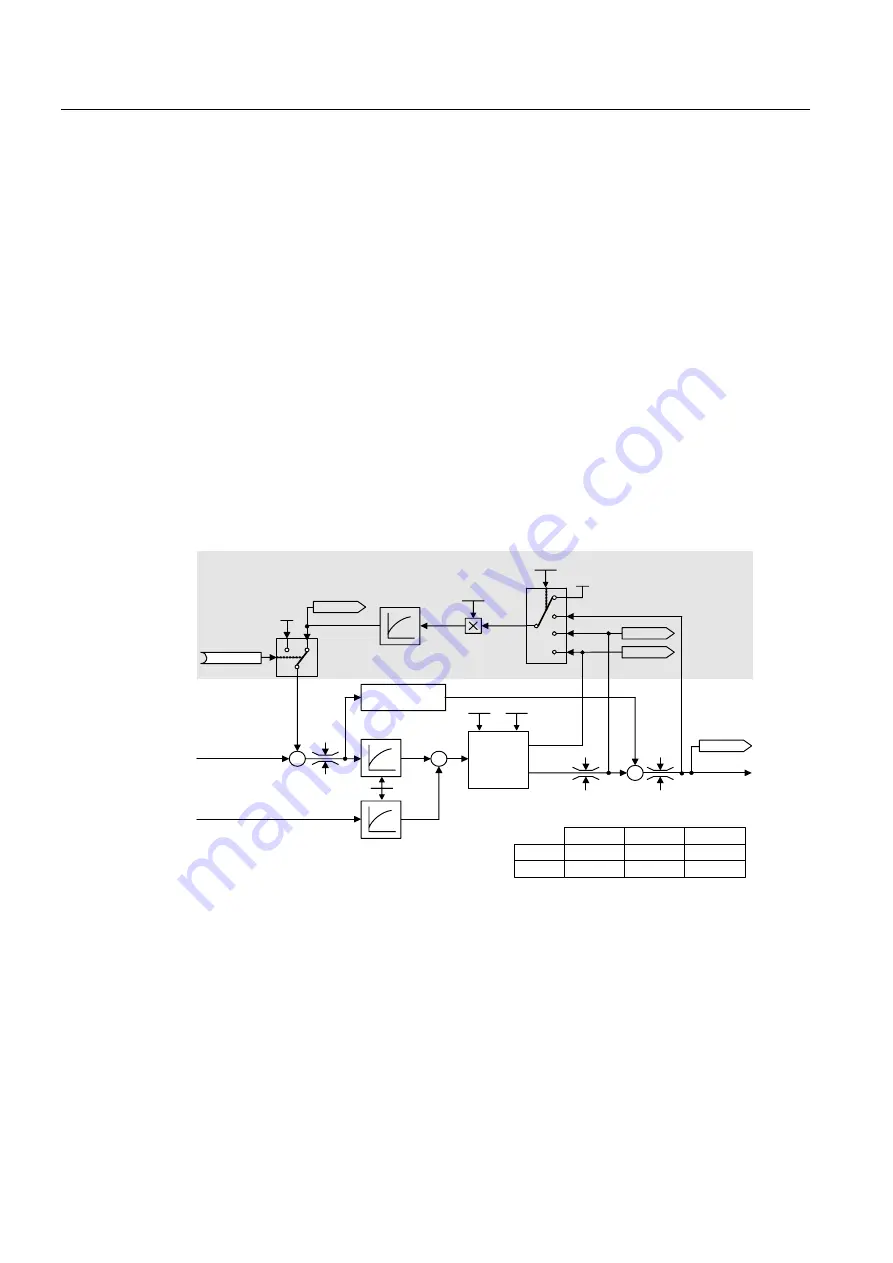
Setpoint channel and closed-loop control
7.4 Vector speed/torque control with/without encoder
Drive converter cabinet units
286
Operating Instructions, 07/07, A5E00288214A
7.4.3.5
Droop Function
Description
Droop (enabled via p1492) ensures that the speed setpoint is reduced proportionally as the
load torque increases.
The droop function has a torque limiting effect on a drive that is mechanically coupled to a
different speed (e.g. guide roller on a goods train). In this way, a very effective load
distribution can also be realized in connection with the torque setpoint of a leading speed-
controlled drive. In contrast to torque control or load distribution with overriding and
limitation, when using an the appropriate setting, such a load distribution controls even a
smooth mechanical connection or the case of slipping.
This method is only suitable to a limited extent for drives that are accelerated and braked
with significant changes in speed.
The droop feedback is used, for example, in applications in which two or more motors are
connected mechanically or operate with a common shaft and fulfill the above requirements. It
limits the torque differences that can occur as a result of the mechanical connection between
the motors by modifying the speeds of the individual motors (drive is relieved when the
torque becomes too great).
-
-
r 1547 [ 0 ]
r 1547 [ 1 ]
0
2
1
3
0
0
1
0
r 1084
r 1087
r 1538
r 1539
p 1 4 8 9
p 1 4 8 8
r 1482
r 1490
150 ms
T
i
K
p
T
n
*)
SLVC :
VC :
p 1452
p 1442
p 1470
p 1460
p 1472
p 1462
T
i
K
p
T
n
*)
**)
r 0079
p 1492
r 1508
**)
$FWXDOVSHHGYDOXH
6SHHGVHWSRLQW
'URRSLQMHFWLRQ
'URRSLQMHFWLRQ
3,
6SHHG
FRQWUROOHU
7RUTXH
VHWSRLQW
3UHFRQWURO
2QO\DFWLYHLISUHFRQWUROLVDFWLYH
S!
(QFRGHUOHVV9&RQO\
Figure 7-15 Speed controller with droop
Requirement
●
All connected drives must be operated with vector and speed control (with or without
speed actual value encoder).
●
Only one single common ramp function generator may be used for mechanically coupled
drives.

